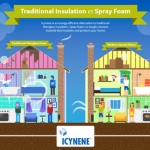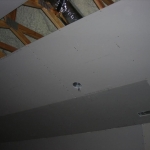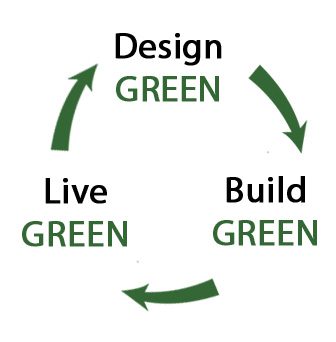by Sean | Apr 30, 2013 | Building Green, Energy Efficiencies, Energy Efficient, Green Building
Today’s home owners and buyers are looking for ways to incorporate home technologies that increase the long-term value of their house but also provide convenience, safety and comfort. Energy management is a highly-desired feature in both newly-built and existing homes, along with multi-zone heating, ventilation and air-conditioning (HVAC) systems and lighting controls. Not only are these features easy-to-use, but they also provide energy-efficiency.
By incorporating the following technologies, home owners can save money on their utility bills:
- Automated HVAC systems can maintain a more energy-efficient temperature while the home owners are away at work, but switch to a more comfortable temperature prior to their arrival home. Zones can also be created to heat or cool only the areas most used by the occupants, keeping other areas, such as guest bedrooms, shut down until they are needed. They also can combat the problem of heat rising, keeping upper floors cooler in the summer without freezing the lower floors in a home. According to Energy Star, a joint program of the U.S. Environmental Protection Agency and the U.S. Department of Energy, programmable thermostats can save consumers about $180 per year in energy costs.
Read More
by Sean | Apr 3, 2013 | Building Green, Construction, Construction & Design, Green Building, News
shared from NHBA.org A newly published study from NAHB’s Economics and Housing Policy Group looks at how operating costs vary depending on the age of the home, using data that has recently become available from the American Housing Survey (funded by the U.S. Department of Housing and Urban Development and conducted by the U.S. Census Bureau). Basic findings include operating costs (fuels, other utilities, maintenance, property taxes and insurance) that average $6,900 a year, $3.77 per square foot, and 4.24 percent of the home’s value. However, some of these numbers vary significantly depending on how old the home is. For example, operating costs as a fraction of value decline regularly as the structure becomes newer, from nearly 5 percent of the home’s value for structures built before 1960 to just under 3 percent for homes built after 2008. The implication of the difference in operating costs is that buyers can purchase a higher-priced home and achieve the same annual operating costs if the home is newer. The article provides an example that takes mortgage payments and income tax savings for a typical buyer of a $200,000 new home into account. The example shows that, if annual costs during the first year of ownership are the constraint, this buyer can afford to pay $37,655—or 23 percent—more for a new house than for one built before 1960. The difference is a little more than enough to cover the price of an extra full bathroom. For more information, including an explanation of the details underlying the calculations, see the complete study, available online.
by Sean | Feb 13, 2013 | Building Green, Construction, Construction & Design, Green Building
Buying a new home or remodeling your existing house is not a decision many families take lightly. Not only is buying a home a significant financial expenditure, your home has strong emotional ties as well. For many families, homeownership is the most valued long-term investment they’ll ever make, and it builds a sense of pride, accomplishment and stability. So it’s not a job you want to entrust to someone who may not have the training or experience to do the job right. One way you can achieve confidence in your selection of a builder or remodeler is if they have earned a professional designation from the National Association of Home Builders (NAHB). NAHB offers comprehensive training programs to builders, remodelers and other industry specialists that lead to professional credentials in specific topic areas. The professional designations in NAHB’s program are aimed at helping home builders and remodelers improve their skills, advance their careers and to recognize industry expertise and commitment to professional growth for the home building industry. Some of the professional designations builders and remodelers can earn include: Certified Aging-in-Place Specialist (CAPS) Certified Graduate Builder (CGB) Graduate Master Builder (GMB) Certified Graduate Remodeler (CGR) Graduate Master Remodeler (GMR) Certified Green Professional™ (CGP) Master Certified Green Professional (Master CGP) Earning an NAHB professional designation is a challenging and enriching process. Designation students learn the latest technology, building methods and business practices through a series of relevant courses taught by expert instructors. In addition to the required courses, they stay current by investing in continuing education to keep abreast of the latest building techniques and emerging industry trends, and to maintain their active designations. For example, choosing a professional who has earned the Certified Aging-in-Place Specialist (CAPS) designation ensures that your remodeler will know how to address common age-related barriers. They will modify your home so that you, or an elderly resident of your home, will be safe and comfortable by widening doors to accommodate wheelchairs or other mobility aids, installing shower bars to improve safety, and making other modifications. Builders or remodelers who have earned designations will also perform the work to the latest safety standards. If you live in a house built before 1978, federal law requires that contractors performing renovation, repair and painting projects that disturb lead-based paint in homes must be certified and follow specific work practices to prevent lead contamination. Home buyers and owners can be confident that a credentialed professional has superior training, practical experience and in-depth knowledge. Designation-earners are qualified specialists who are ready to meet your specific needs, have passed rigorous coursework and are committed to being among the best in the business. Each year, hundreds of builders and remodelers from around the country make the effort to earn professional credentials. To find out more about what builders and remodelers who have earned designations can do to help you achieve your housing goals, go to nahb.org/forconsumers and select Work with a Certified Professional. Sean Sullivan is an Accredited Master Builder and past president of the Asheville HBA. He is currently the Region X VP of the NCHBA. His firm, Living Stone Construction, is a first-tier builder of fine custom homes in Western North Carolina, and recently won “Best in Black Mountain in Custom Homes 2011” by the US Commerce Association. Source – www.NAHB.org
by Sean | Feb 5, 2013 | Building Green, Green Building
Living Stone Construction understand the importance of using “spray foam” to insulate every home we build for many reasons, the most important being the energy efficiency Spray foam insulation offers numerous benefits that traditional cellulose or fiberglass insulation fail to provide. Here are a few of the reasons why this kind of insulation is an ideal, energy-efficient alternative to its counterparts.
- Spray foam insulation fills gaps
- Spray foam insulation expands up to 100 times its volume when it is applied to surfaces, filling gaps that might otherwise cause air leakage. Meanwhile, cellulose and fiberglass can be loosely packed, which can result in drafty spots or stuffy areas in a building.
- Spray foam insulation is healthier
- Spray foam insulation is eco-friendly and helps keep allergens and pollutants outside of homes and businesses.
Read More
by Sean | Jan 21, 2013 | Accreditation, Building Green, Green Building, Recognition
The U.S. green building market continues to accelerate, according to McGraw-Hill Construction’s 2013 Dodge Construction Green Outlook report. The value of green building has seen growth from $10 billion in 2005 to $78 billion in 2011. In 2012, the total market — non-residential and residential — is expected to be worth $85 billion, and by 2013, overall new green building is projected to rise to between $98 billion and $106 billion. By 2016, this number is expected to reach $204 billion to $248 billion.
Read More



